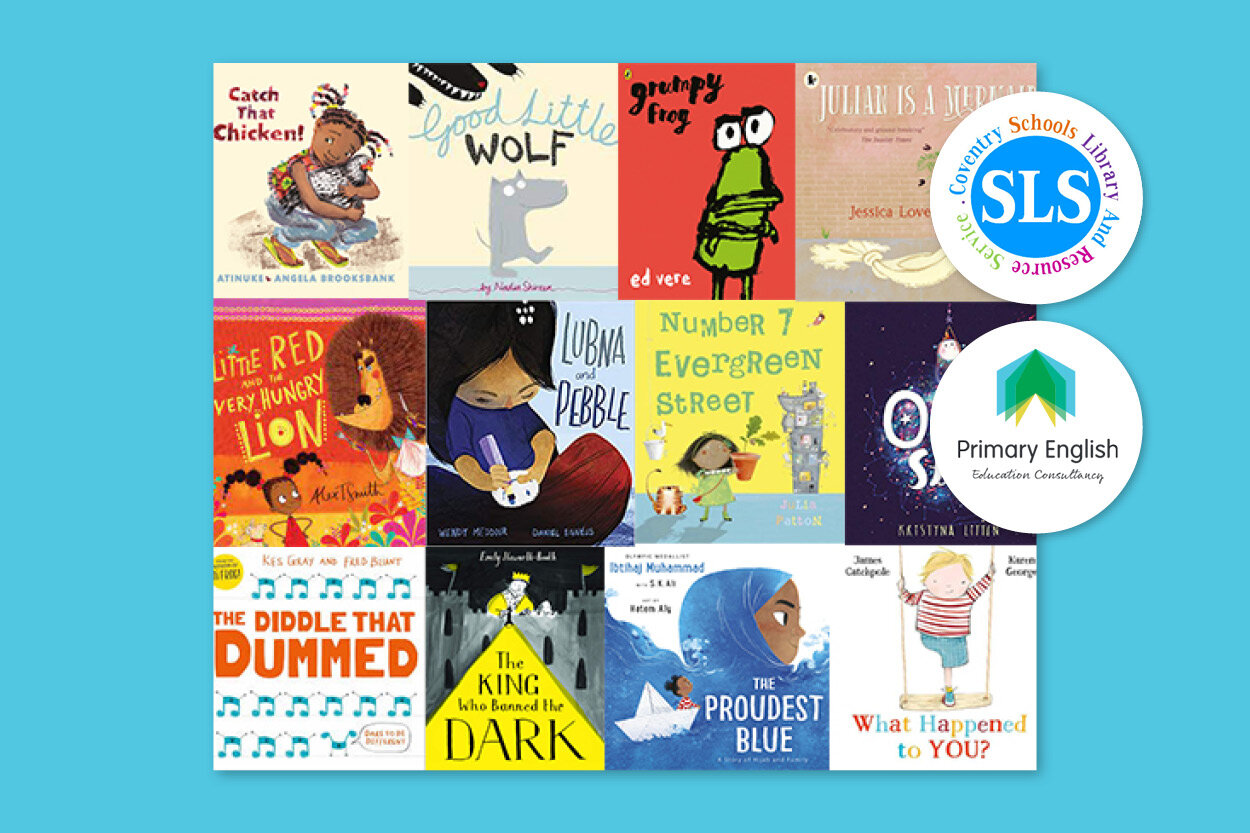Choosing ‘read aloud’ stories for Key Stage 1
“‘The single most important activity for building the knowledge required for eventual success in reading is reading aloud to children.’”
Storytime is one of the most pleasurable parts of the school day. A time where everyone comes together, where the pace slows down, and the focus is on sharing a book together.
Making time, each day, to read to children is vital. It’s a time where we can share books that children would otherwise be unable to read themselves. Consequently, they experience plot lines and narrative structures more complex than the ones they’d find in their own books. And as written language tends to use vocabulary in more complex and creative ways than most oral language, reading aloud to children immerses them in rich vocabulary and complex grammatical structures. Storytime is also a space where they hear fluent and expressive reading that they can aspire to recreate. Furthermore, when we read aloud to children, the books we choose are more likely to explore themes, emotional literacy and ideas that young children are unlikely to meet in their graded and decodable texts alone.
Running alongside these literary advantages, Storytime also connects the listeners (and the reader) in a shared community experience. The book, the teacher, the other children, and the pleasurable time-out to listen combine to become a shared experience bound in a literary dimension of time and space.
Achieving this state requires choosing the right books to read aloud (whether you be teaching in Early Years, Key Stage 1 or Key Stage 2). In this article about establishing a read aloud culture in your school, we came up with a check list that included
Avoiding books with lots of speech bubbles, asides and shout-out text. These features work well on an individual level or when reading in a huddle, but they just don’t transfer to reading aloud in a group.
Choose books with rhythm, rhyme or repeating phrases. This way children can join in with the predictable parts of the text. This leads into the next point…
Don’t neglect poetry. It’s often short so fits into a limited amount of time and many children’s poems are written with reading aloud in mind.
If you’re reading longer books, choose texts with good cliff-hangers. If children are groaning because you’ve finished a chapter, then you’ve probably made a good choice of text that the children want to continue hearing.
More recently, in our work with Coventry Schools Library Service, we have developed a spine of core books for each Key Stage. Because we’re aware that the books we choose should mirror the lives of our children and offer them windows into unknown worlds, we’ve ensured that our reading spine goes the extra mile. This means you’ll find read aloud books that:
Represent children’s diverse backgrounds, whether that be cultural heritage, gender, disability or social class.
Explore emotional literacy so that children can empathise with characters that experience their feelings, and of course acquire the words to precisely describe their own emotions.
Provoke reactions. We want children to experience a range of emotions from laughter to compassion.
To experience the best children’s literature and illustration. The books we read aloud have to be the best books there are, and often these are not the ones we find on the checkout at Asda. Which is why we worked with children’s librarians to curate a collection of inspiring books.
“ The challenge is to make sure that the right books support all children to thrive, whatever their background. Teachers need to choose those that will engage all of them emotionally.”
And it’s not just us here at Primary English HQ who recognise the importance of regular Storytimes. In Becoming a Nation of Readers, Richard Anderson and his colleagues stated that: ‘The single most important activity for building the knowledge required for eventual success in reading is reading aloud to children.’ And in The Reading Framework: teaching the foundations of literacy , the authors acknowledge that ‘The challenge is to make sure that the right books support all children to thrive, whatever their background. Teachers need to choose those that will engage all of them emotionally.’ This is an excellent document which includes quality, practical advice for teachers looking to improve their read aloud curriculum as can be seen in the following image.
So, if you’re looking to improve the quality of your Storytime, what can we do to help? In the first instance, read the range of articles here on the Primary English website that promote reading aloud. Some that you may find of interest are:
Are you sitting comfortably? - approaches to promoting reading for pleasure in your school
Good books to read aloud - a vintage blog with book recommendations from our colleagues at Coventry Local Authority
Read aloud this Christmas - a selection of Christmassy books that are great to read aloud
Promoting a Whole School Love of Reading - recommendations to help you become a reading school
The Representative Reading Spine - information about our Representative Reading Spine
Next, take a look at our Representative Reading Spine. This collection of books was collated with reading aloud at its core. Each book represents diverse children and helps you explore emotional literacy and a range of themes.
You can download the planning and teacher’s guidance for each book in the Representative Reading Spine here on the Primary English website, or you can visit our friends at Coventry Schools Library Service to buy discounted copies of the books alongside the planning and teacher guidance. Simply click the buttons below to find out more.
All that’s left to do now is choose those books and start reading them aloud to your class.


